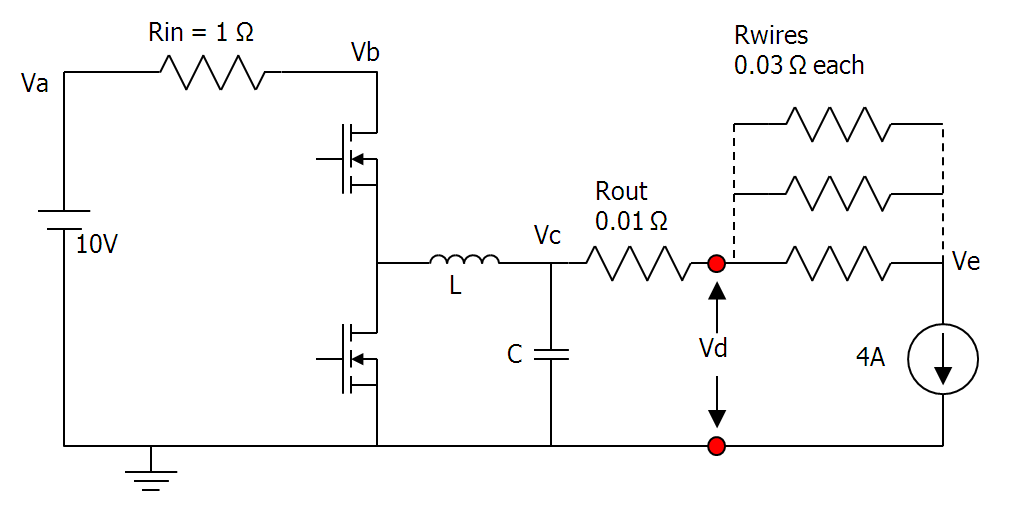Hi,
I am newbie in power supply design, so I might have some dumb questions. Please generously understand that.
I am using TPS40322EVM-679 evaluation board to generate1.0V and 1.5V output with 12.0V input voltage.When I measured the efficiency of the board with 4A current draw from the load for 1V output, and 1A current draw from 1.5V output, I got around 84%. I am wondering if I can increase the efficiency even higher than this by decreasing Pulse Width Modulation frequency. It seems that I need to change many components if I want to change PWM freq, so I am trying to understand the design procedure in the datasheet.
Q1: In the datasheet equation (13), is Vripple what I need to decide depending on how much stable output voltage needs to be?
Q2: In eq (21), is current sensing input voltage Vcs(max) 20mV in TPS40322? I am a bit confused due to the "max" since I can only see Vcsin = 20mV in the datasheet.
Q3: In the explanation above eq (21), it says the divider resistor R15 is added if voltage drop across the DCR of the inductor is greater than Vcs(max). Does this mean I need to measure the voltage drop across the inductor first before installing R15?
Your reply would be appreciated.
Peter


